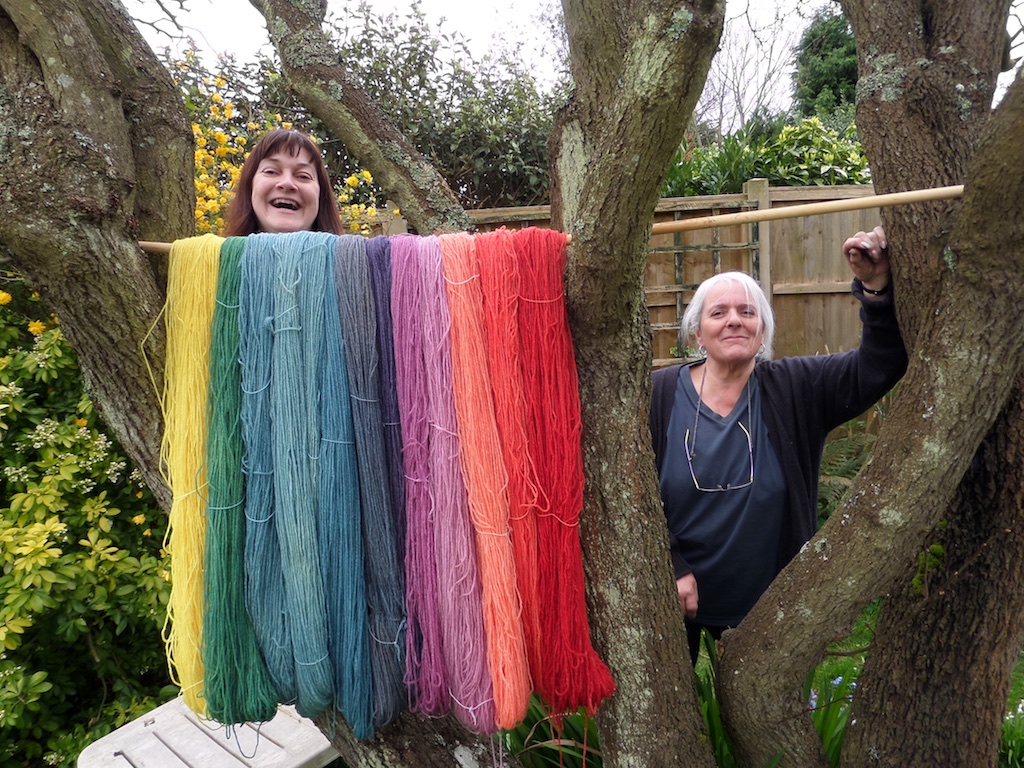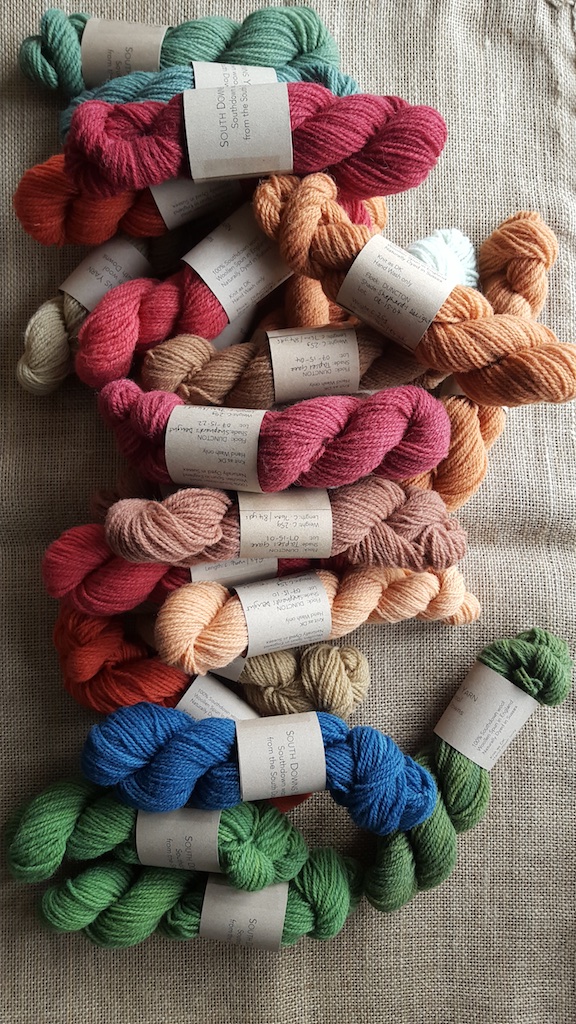Last night we heard from Louise Spong about The South Downs, Southdown sheep, and South Downs Yarn. You may have seen a few glimpses of the beautiful palette that the yarn is available in. Louise only uses natural dyes, and she is indepted to Jenny Dean, who is her mentor and partner in crime in front of the dye pot.

Tom: the palette of your colours is beautiful. Why have you chosen to use plant-based dyes only? What does this mean for your customers?
Louise: we use natural, plant-based dyes for a number of reasons. I was adamant from the beginning that I wanted the environmental footprint of the company as a whole to be as low as possible. On an aesthetic and personal level I love the range of colours and the diversity of hues that can be achieved with natural dyes and I didn’t want to outsource that element of creativity to someone else. I am also drawn to the small batch idea. We can and do dye to order if a customer wants a particular amount by weight of a single colour, but the idea is that each batch should be genuinely unique. We can reproduce the same range of colours. However, each small batch is never the same again as there are so many things that can influence the dye bath results. I love this aspect of our work and it is something that I get a lot of positive feedback about from our customers.
Although as an adult I developed an interest in natural dyeing I had only ever done a couple of day courses. I had tentatively sown some dye plants but I wasn’t harvesting them, they had turned into purely decorative plants in my garden. By the time the wool had been processed, I was surrounded by sacks of Southdown skeins and I still didn’t have a plan about how I was going to dye them. I kept thinking ‘something will come to me’. I thought it would be an idea, I didn’t know then it was going to be a person! A few months later Jenny Dean reached out to me having been elected as the Chair of our local Guild of Weavers, Spinners & Dyers. I was helping out with the website and she wanted to update the committee details. We got chatting about all things woolly. It was amazing to find that Jenny and I share an enthusiasm for so many things including our local landscape, sustainable living, local wool and growing and harvesting our own plants to dye with. Thanks to Jenny my garden is now productive as well as pretty. I realise I have been so fortunate to find such a friend and mentor right here on my doorstep.
Jenny: there is something very special in making colours following the same methods and using the same dye plants that have been used for centuries by generations before us. We know from archaeological evidence that textile production was probably carried out on Cissbury Ring in the Iron Age, and living and working her in Findon at the foot of the Cissbury Ring I feel we are continuing a very ancient tradition. The Natural History Museum’s post code register of plants [author’s note: this is no longer available on-line] native to this area means we can also use native plants that would have grown here in the Iron Age and earlier. These are then augmented by plants that grow here in my garden, or can be harvested locally.
Unlike synthetic dyes, each plant-based dye consists of several dye pigments, so as the yarn catches the light the colour is subtle and never flat. For me there is interest and pleasure to be found in the methods of creation of colour, not only in the end result. There is real magic and satisfaction in starting with the raw materials and going through all the processes involved in creating colour.

Tom: natural dyes have, undeservedly, a reputation of being fugitive and murky of hue. Can you prove those naysayers wrong?
Jenny: we only use dyes and methods that have stood the test of time and are known to produce reliable, fast colours. Why waste one’s time using plants that are not true dye plants and give only fugitive colours? That seems to me not only to be utterly pointless, but it also brings natural dyeing into disrepute. Anyone telling me that “natural dyes fade and only give pale, dull colours” is likely to have to listen to a very long lecture from me!
Tom: I’m assuming that using plant-based dyes has a lower environmental impact, is this true?
Jenny: my basic concept is “rooted in the earth” and we only use environmentally-friendly dyes and methods. To quote Michele Wipplinger from Earthues: what comes from the earth shall not harm the earth. What this means is that we only use substances that are non-toxic and safe to handle, and we re-use mordant and dye baths until they are exhausted. They can then be safely discarded. We use mainly plants we grow or gather locally, and plant remains are put in the compost bin.
I would like to thank Louise, Jenny, and Graham for showing me what South Downs Yarn is all about. Rooted in the earth, made from a sheep breed rooted to this part of the world, and dyed with plants that are also, literally, rooted to this part of the world. Roots that grow all the way back to the Iron Age.